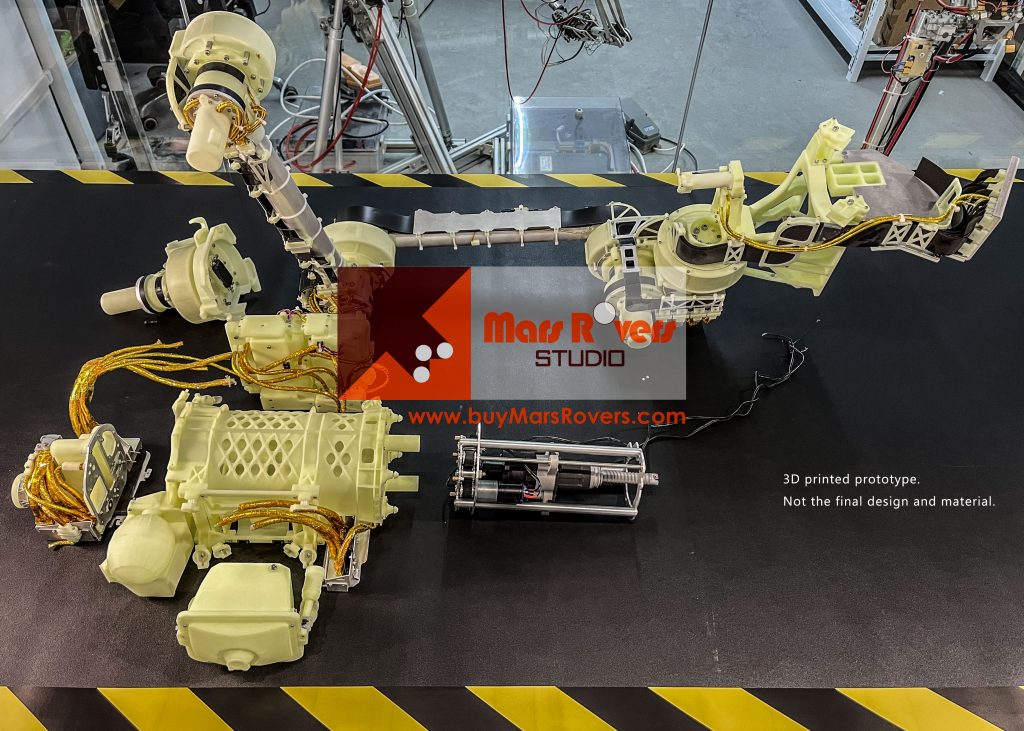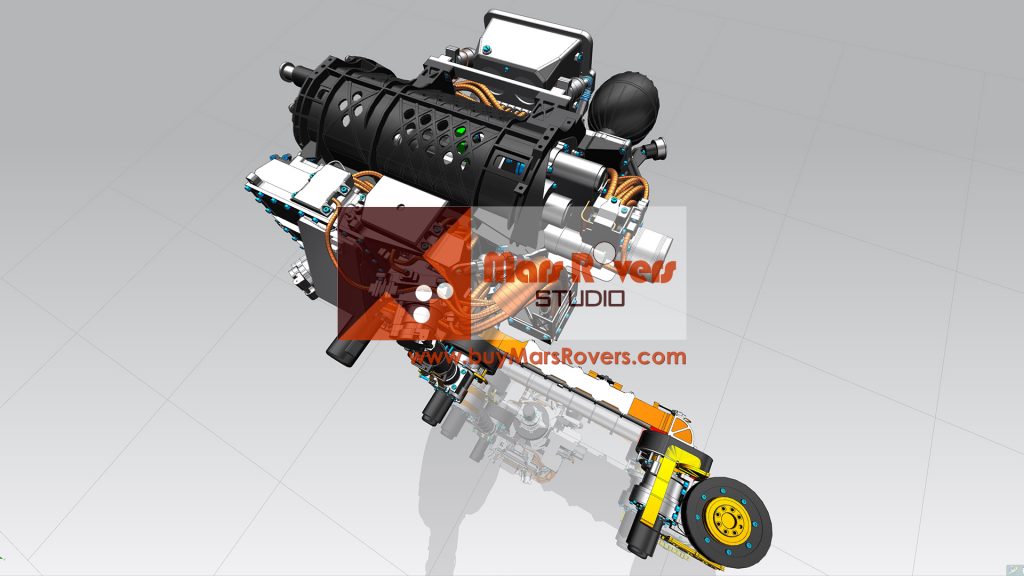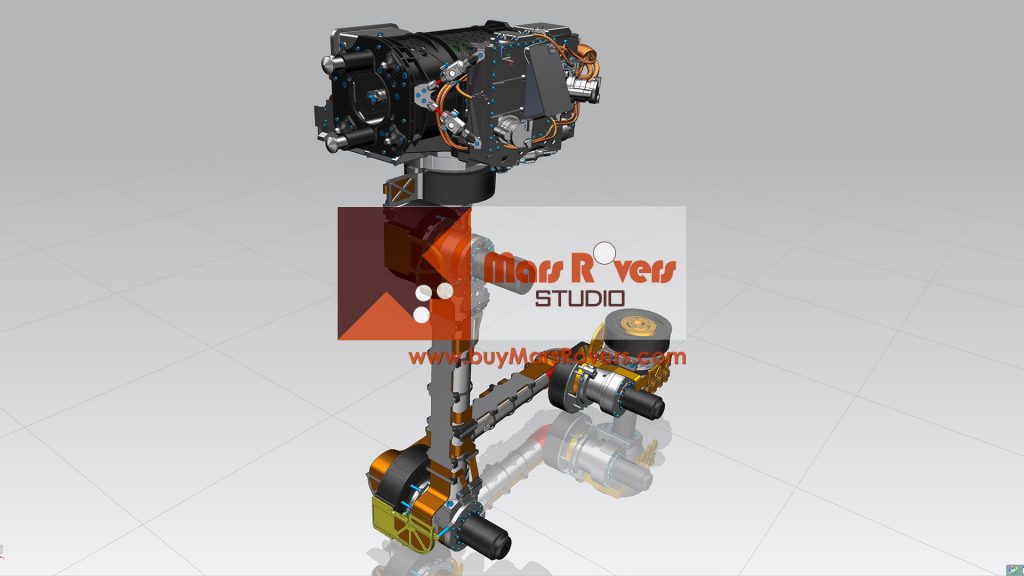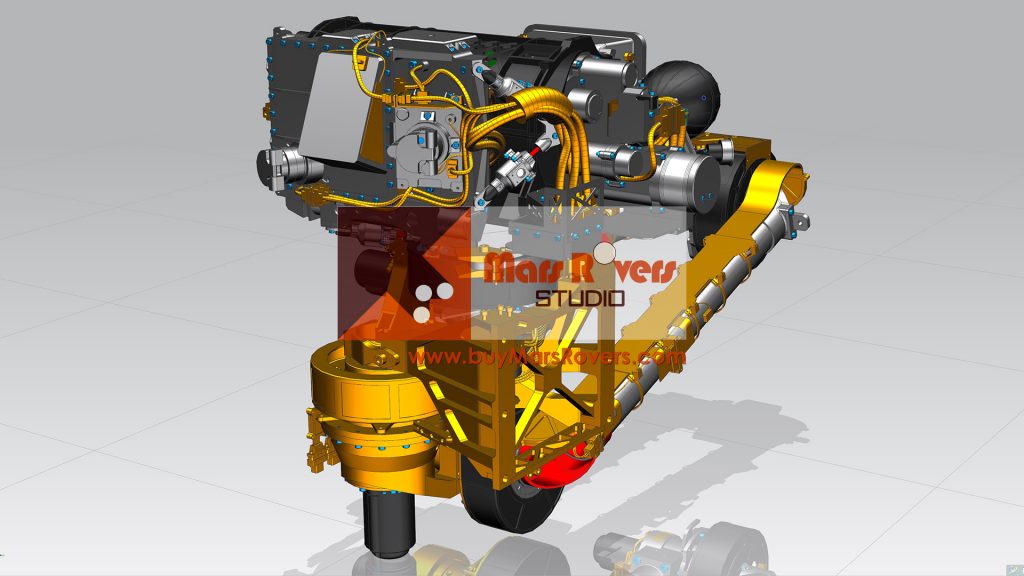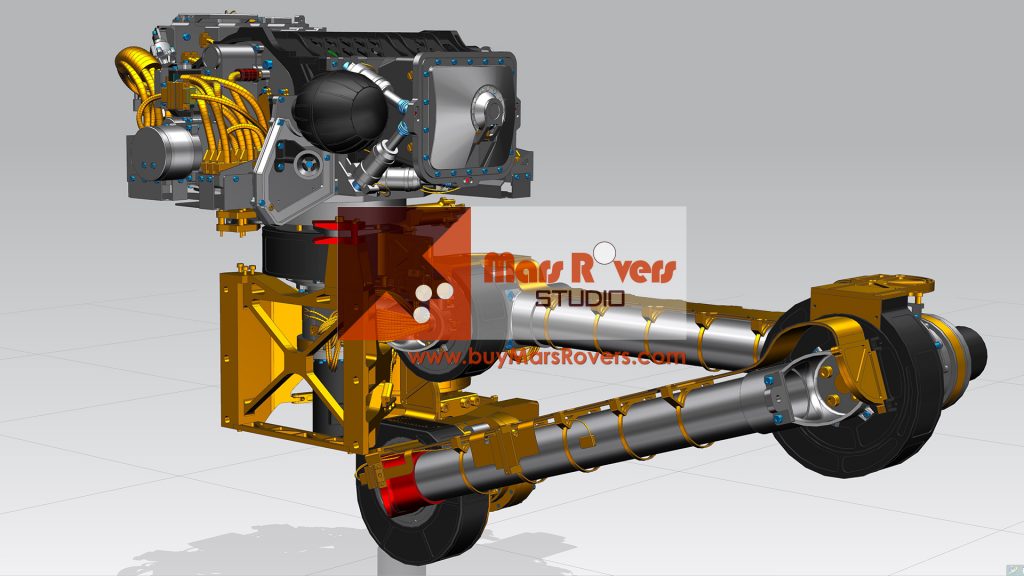While our design team is finalizing the design details of the 1:2 Mars 2020 Perseverance Rover Replica, our building team has been verifying the designs using SLA 3D printing technology since 3 months ago.
We started the verification process from the robotic arm and the turret of the 1:2 Mars 2020 Perseverance Rover Replica. They are parts of the most complicated structures, the Sample Caching System (SCS), in the 1:2 Mars 2020 Perseverance Rover Replica.
The robotic arm (RA) of our 1:2 Mars 2020 Perseverance Rover Replica has a total of 5 joints and each joint has one electronic motor inside which allows the robotic arm to make movements exactly the same as that of the real Perseverance Mars Rover on the Red planet.
The SHERLOC (and WATSON) in our 1:2 Mars 2020 Perseverance Rover Replica has no scientific function but it is attached to the instrument turret via six vibration isolators arranged in three pairs which is the same way as that of the real Perseverance Mars Rover.
The PIXL in our 1:2 Mars 2020 Perseverance Rover Replica has no scientific function but it is attached to the instrument turret via six actuated struts (Electric actuator) arranged in three pairs which is the same way as that of the real Perseverance Mars Rover.
The Drill in our 1:2 Mars 2020 Perseverance Rover Replica can use exchangeable bits to drill on rock and collect ‘samples’ into the tube inside each bit. This assembly and its assistant structure are extremely complicated. We will need to do a lot of tests and changes of design to push the techniques to an affordable and available limit so as to make this part work as similar to that of the real Perseverance Mars Rover as possible.
The following photo shows the 3D-printed parts of the robotic arm and turret. Some parts are assembled and then dissembled so as to help the design team to optimize the design. The new design will be 3D-printed and assembled with the ‘correct’ parts. Although we have done simulations in the design software, sometimes, a large part of the design is still proven totally wrong after we assemble parts in the physical world and therefore we have to roll back to the beginning and redesign everything. This kind of iteration happened a lot in the process of building our 1:2 Mars 2020 Perseverance Rover Replica, let alone that of the real Perseverance Rover now on Mars.
